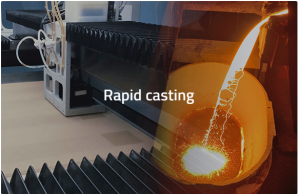CNC Machining: The Modern Manufacturing Beast
CNC ManufacturingComputer Numerical Control (CNC) Machining What is CNC Machining? This method applies computerized controls for machine tools like lathes, mills, and grinders, making it possible to manufacture complex parts with very high accuracy requirements. CNC machined parts are crucial in aerospace, medical fields, where precision is of the utmost importance.
CNC Machining Mechanics
The vast majority of CNC machining processes begin with a digital design, often generated using Computer-Aided Design (CAD) software. The part is designed into a numerical format, usually G-code, in which allows CNC machines to make the part. CNC removes manual interference that helps a lot to remove the human error factor and it makes the repeatability of the manufacturing process possible.
Flexibility in Materials and Applications
The great range of CNC machining enables CNC machines to be highly versatile. It is compatible with a wide variety of materials such as metals like Aluminum and Titanium or plastics like ABS and Polycarbonate or even with Composite materials. This flexibility is what makes CNC machining indispensible in Custom Manufacturing, Prototyping, and Full-scale Production across multiple industries.

Further Technological Advancements and Efficiency
In the last 20-30 years, there have been major technological changes that have improved and expanded the capabilities of CNC machining. The newer CNC machines have the ability to operate with much higher speed and precision. A high-end model, for example, can reach spindle speeds of 25,000 RPM and hold tolerances as tight as 0.0001 inch. These features guarantee exceedingly high precision and superior surface quality, crucial for applications like aerospace components, and intricate medical devices.
Economic Consequences and Cost-Utility
CNC machining is just as much about technical superiority as it is about economic efficiency. With less waste and fewer production times, CNC systems are more cost-effective to use than traditional methods of production. Multi-axis machines is an example which allows complex parts to be manufactured without need for multiple setups, saving time and labour costs.
Future of CNC Machining in Manufacturing
As with most industries, the need for more personalized and more complex products continues to expand and control the market, putting CNC machining at the very forefront of modern industrial manufacturing solutions. This versatility to modify for new applications and coalesce with other technologies, including 3D printing, is what truly makes robotics a powerful force in the future of manufacturing.
For a more in-depth look into the world of CNC machining, check out the specifics at CNC machining
Key Takeaway
CNC machining, meanwhile, offers a huge breakthrough in manufacturing technology, with precision, versatility, and productivity without a parallel. This is emphasized by the fact that it continues to drive innovation and quality in a range of industries, making it increasingly difficult to overstate its importance and longevity within the global manufacturing sphere